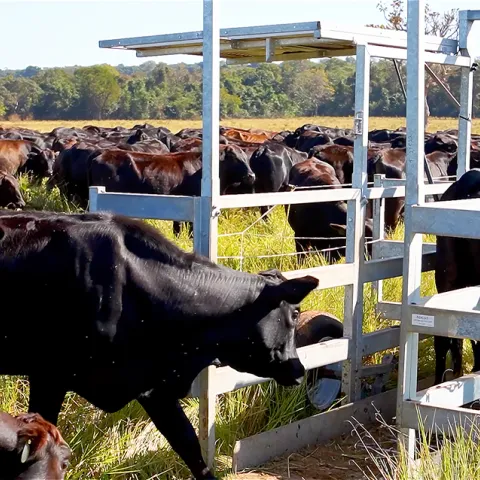Automation isn’t just a trend; it’s a strategic move that can redefine the future of your dairy. Here’s why investing in automation is a necessity for forward-thinking dairies.
Benefits of adopting automated technology
Automated technology takes a lot of forms on today’s dairies. From robotic feeding and milking to automated monitoring systems, technology offers precision and dependability to dairy management. The most impactful benefits are improving efficiency and productivity, ensuring consistency in cow management, enhancing animal welfare, reducing cost, and supporting sustainability.
Improving efficiency and productivity
Dairy is inherently labour-intensive and most daily tasks require significant manual effort. It’s no surprise that labour shortages have seriously affected the dairy industry. Automated technology offers a solution. Automating processes such as heat and health checks, data collection, and drafting animals drastically reduces the amount of manual labour needed. This leads to more efficient and productive operations, reducing your staff requirements and focusing your skilled employees on other critical areas.
Ensuring consistency in cow management
Consistency in cow management results in happier cows and higher milk production. Automated technology integrates data collection into everyday routines. By implementing unattended data collection devices, you get accurate, reliable information on individual cow performance without compromising milk output by added human intervention.
Enhancing animal welfare
Automated technology isn't just about efficiency; it’s also about improving animal welfare. Automated technology is often much quicker at detecting a problem than human senses, meaning you can be more proactive in your approach to treating cows. Happy, healthy cows are more productive, which translates into higher production and lower input cost.
Prioritising sustainability
Sustainability is becoming increasingly important to consumers and regulatory bodies alike. Automated technologies can contribute to more sustainable practices by optimising resource use and reducing waste. By investing in automation, dairies not only improve their operational efficiency but also demonstrate a commitment to sustainable practices.
Challenges to adoption
Cost of investment
Investing in automation may require an upfront financial commitment, but the long-term savings are significant. Automated systems reduce labour costs and minimise waste, leading to a more cost-effective operation. Improved herd health also results in cost-saving through fewer hospital cows, lower treatment costs, and fewer skilled staff required to provide care.
Change management
Shifting your operation to integrate more technology does require some change management. Your employees will need to be trained on new tools and processes. There will inevitably be a curve to adoption that will impact your performance for a short time. With preparation and communication, however, this impact can be minimal and short lived. Evaluate the compatibility of the technology and your infrastructure to ensure it will be a good fit from the start. Involve your herd managers to walk through changes in daily operation to ensure you’re accounting for as many variables as possible.
Finally, choose a technology provider that knows the details of your operation and is willing to work with you and your advisors to adjust your farm to a change in management style.
Investing in automated technology is more than a strategic move; it’s a commitment to excellence and innovation. By improving efficiency, ensuring consistency, enhancing animal welfare, reducing costs, and supporting sustainability, automated systems offer a comprehensive solution to the challenges dairies face. As the industry continues to evolve, embracing automation is not just an option—it’s the path to a thriving, future-ready dairy business.
